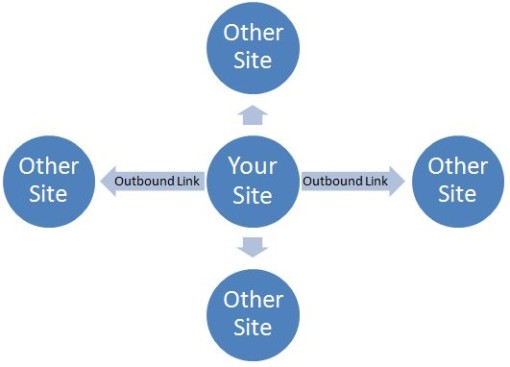
It is not enough to optimize the title of your blog in order to rank highly on Google. The web crawler wants to find keywords within your content, and a basic SEO strategy will make it easier for Google to index and display your content. Headings are another area you should focus on when optimizing your blog for SEO. These help search engines understand the hierarchy and flow of your content. When using headings, be sure to include keywords and phrases in the beginning, middle, and end of each section.
Meta description
A meta description is an essential part of any SEO blog. Use an organic tone to write it. Answer a user's query with your meta description and showcase your high-quality content. Websites that look like spam are a negative impression on users. Keep in mind the golden rule: Write for people, not robots. You will get more clicks. Here are some suggestions to help you craft a compelling meta-description.
Make it interesting: Use your main keyword in your meta description. Google doesn't consider your meta description when indexing your site, but it helps to attract users' attention. It is important to keep your meta description between 140-161 characters. Make sure you bold the most important words. A call to action should be included in the description, such as a link that takes you to your website. A good meta description also has an appealing call to action.
You can advertise your company by using the meta description. It is a great opportunity to get a user to click on your link and grab their attention. A high-quality meta description can increase your site's website traffic and increase sales. The end of the meta description should contain a call to action to encourage users to take action. Your meta description may not be useful if you have too much or outdated information.
In addition to being readable, a meta description can increase your click-through rate. The meta description, when used correctly can improve your organic traffic as well as your rankings. The meta description plays a moderate role in Google's search engine results. Your meta description may not be optimized well enough to rank your page on page four, instead of page 1. It is worth adding a meta description to your blog even if it has a low click through rate.
Keywords in title
Make sure you are using focused keywords in the title. This will help you get the most out your SEO blog post. The title of your article will help you determine the direction of the content and the likelihood that it will reach your target audience. The keywords in the title help search engines to summarize web pages based on the keywords contained within the content. These crawlers have improved their technology to better judge the quality of material on the Web. For better search rankings, make sure to include keywords in your titles.
Crossfit training phrases or gyms can be used if you have a gym. Be sure to only use one keyword in each article. Too many keywords in a single article can appear spammy to search engines. This makes your content less useful to your readers. Articles that use long-tail keywords will rank better than those with shorter-tail keywords. These phrases are a great method to rank higher on Google for a specific keyword.
The title of your SEO website should not exceed 70 characters. The title tag should include your focus keyword as close as possible. You should also use your chosen keyword to convey the benefit of your article. Keyword stuffing, boilerplate titles, and keyword stuffing are bad practices. Google warns you against keyword stuffing. It is important to include a strong focus keyword in the title. Your audience should also be able to understand your content.
Just putting your keywords in the title is half the battle. Your title should not exceed 60 characters, or 575 pixels. Your title must live up to what you have promised. Also, make it easy to scan and understand. SEO is all about planning. Your title should be as effective and informative as possible.
Internal links

There are many options to improve your website's search engine optimization (SEO). Use internal links to direct users on your website to different pages. These links can be used to direct users to different pages or products. This improves user experience and increases search performance. You should remember that backlinks are not the same thing as internal links and readers won't be able to find them themselves. But using internal links in the right places is one way to achieve this.
SEO-friendly SEO tips include adding internal links to your blog. This will help you attract and keep readers. Different styles are used by different sites for linking, so it's important to use the correct anchor text and words when creating a strategy. Internal links are a great way to grab your readers' attention and keep them on your website longer. For best results, make sure to use internal links that point back to relevant content and offer a useful solution for a user.
If possible, internal links should point to the main target keyword. Google is unlikely to penalize you if you use exact-match anchor words. However, make sure that the anchor text matches what you are linking to. But it shouldn't be keyword-stuffed. It is not a good idea to manipulate the anchor text to boost your search engine rankings. This tactic violates Google's Webmaster Guidelines. This is a much more effective method than you might believe.
You can also optimize your internal links by creating content that is related to your core service. An example: A Columbus landscaping business generates 390 searches per month. This is significantly less than the search volume generated by the phrase "best phone". SEO can be improved by strategically including relevant internal links in your blog articles. This is done by anticipating the questions users may have as they visit your site.
Schema markingup
To increase search engine rankings, you can include schema markup in blog posts. To create schema markup, visit Google Structured Data Markup Helper. Enter the URL of the website, choose a category and copy the HTML code. This tool generates a tag manipulator and a rendered page in a new window. From there, you can click individual elements to tag them.
There are three types of schema markup: NewsArticle, TechArticle, and Microdata. Each type can have a different set of flags, depending on the content of the post. NewsArticle is for articles that focus on current events. TechArticle can have flags indicating the technical content in the article. For example, a HowTo article may have flags that indicate the author's technical level, the program used, and any dependencies.
Google has created an easier to use interface to create schema. You can tag data to see similar content in search results. To increase brand awareness, schema markup should be used in blog posts. If you are a small business with a local address, schema can be used to advertise your business. Schema can be used to promote events and your business. There are many benefits to using schema markup for your SEO blog post. These links will help you to decide what schema markup to use.
In addition to being a great way to improve search engine optimization, you can use schema to optimize your content. The markup allows search engines to understand the various elements of a website. Schema markup is useful for blogs about food. It can identify ingredients, steps to follow, and nutritional values. Schema can also be used for review blogs. In general, the more relevant content you have to a user’s query, the higher your search engine rankings.
Copyrights for images

You must get the permission of the owner before using any image on your SEO blog. Many PR agencies will not allow you to share images from their sites. Contact them to learn who owns the image. In most cases, the owner will give you permission to use their image. Here are some tips for complying with the law
Google images should be avoided. You should contact the owner of an image before using it on your blog. Google allows images to be searched, but you need permission to use them. You can request permission to use the image if you have trouble finding it. This will ensure that you're not violating any copyrights. Image copyrights can make the difference between a successful SEO blog and a website that gets banned from search engines.
It is important to ensure you verify the copyrights to any image that will be used on your blog. While it might be tempting to use images found on Google Images, it's illegal. Stealing images without permission is a discrediting act that exposes you to legal repercussions. If permission is granted by the owner, public domain and fair-use photos can be used. If you still have any doubts, consult an intellectual property attorney.
Images that are used in SEO blogs must have the same author as the attribution. Photos that are funny or creative will be more likely to get used for SEO purposes. However, you should always read the terms of the license. There are some images that you can use for free, but others have restrictions. Don't use images that you don't know the author of. You may be violating the copyright if they are not royalty-free. Even worse, you could face a lawsuit, which will cost you a lot of money.
FAQ
What's the time frame for PPC Advertising to produce results?
Paid search results can take longer to show up than organic searches because they lack a natural flow. People expect to see the most relevant results when they search for something. Paid search results will need to convince more people to pay money for advertising on their website.
What is a blog post?
A blog is a type of website used to share articles with visitors. Blogs contain a mix between written posts and pictures.
Bloggers create blogs about their own experiences, thoughts, and opinions. However, some bloggers choose topics that relate to their businesses or careers to blog.
Blog owners can easily set up blogs by using a simple software program called a blogging platform'. There are many options for blogging platforms. Tumblr and Blogger are three of the most popular.
Blog readers read blogs because they enjoy what they read. It's important to keep your writing fresh and interesting. Be sure to know what you are writing about.
To help your readers better understand the topic, you should also include helpful information and resources. To illustrate, when you write about improving your site, don't just tell readers to go on Google and check out other business' websites. Instead, give specific instructions about how to make a website successful.
It's important to remember that people will enjoy reading your blog if it has good content. Your writing will be viewed as uninteresting if it's not clear and concise. Poor grammar and spelling will also be a problem.
It's easy not to get distracted by blogging. You should stick to a publishing schedule, and publish content only once per week. Your blog should never feel like a chore.
How often does SEO need be done?
You don't necessarily have to carry out SEO campaigns every day if you manage your links correctly. You could lose business if your links aren't maintained and you rely only on organic traffic.
For small businesses, it is recommended to update your SEO every month. For larger companies, quarterly SEO updates may be necessary.
How often should I update my website?
There are several ways to update your website. A Content Management System (CMS) is one way to update your website. This allows you to easily modify all content on your site without needing to touch any code.
Another option is to install a plugin that automatically updates the website. These plugins can either be purchased from WordPress stores or installed by you.
You can also download free plugins such as Yoast and WPtouch. You can test various methods and find which one works best for your needs.
Statistics
- 93%of online experiences today begin on search engines. (marketinginsidergroup.com)
- Deleting those 10k pages is one of the main reasons that he improved his site's organic traffic by nearly 90%: (backlinko.com)
- And 90%+ of these backlinks cite a specific stat from my post: (backlinko.com)
- If two people in 10 clicks go to your site as a result, that is a 20% CTR. (semrush.com)
- A 62.60% organic traffic boost to that page: (backlinko.com)
External Links
How To
How to create your keyword strategy
Keyword research is an important aspect of any SEO campaign. It helps identify what people are searching for on search engines such as Google and Bing. It also enables you to develop content around these keywords. This allows you to put your efforts into creating content that is high-quality and relevant to specific topics.
Keywords should be naturally placed within each page's content. These keywords should not be placed at the end or in unnatural places. Instead, use words that describe the topic in question and place them where they make sense. If you are writing about dog grooming, use the term "dog grooming" rather than "dogs," "groom", or "grooming". This makes the content easier to read and easier for users.
It is best to avoid using too many keywords. You'll need to invest time in creating high-quality content for keywords. You could find yourself spending too much effort providing low-value content which isn't interesting enough to attract visitors. Backlinks should be kept to a minimum. You shouldn't disregard backlinks completely, however. They still have value for websites if used correctly. Your website authority can be increased, which helps improve rankings.
It is especially helpful to link to other websites covering similar topics. You can increase your chances to appear higher in search engine results by linking to product reviews blogs.
This will ensure that you get more organic traffic from niche-related searches. Consider joining forums to help promote your site. There is a good chance that other members will mention your site.